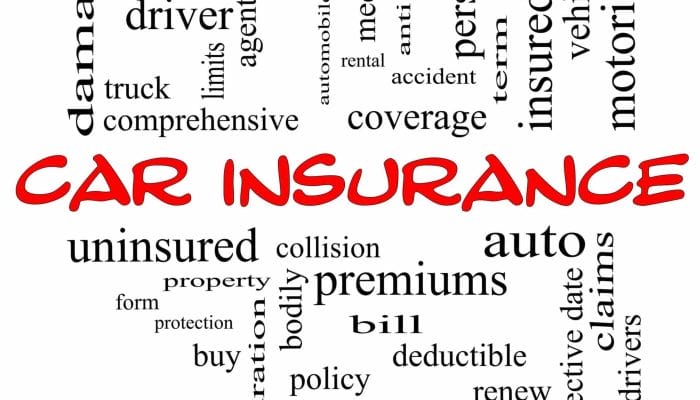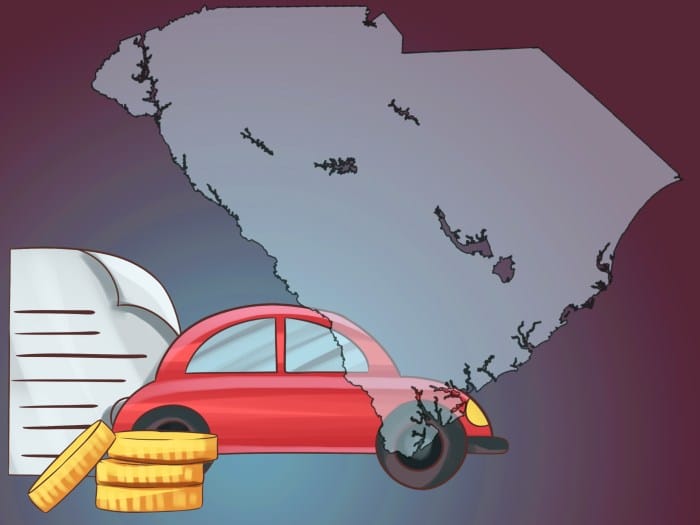Young drivers often face higher car insurance rates due to their perceived higher risk profile. However, there are numerous strategies and practices that young drivers can adopt to mitigate these costs and secure affordable car insurance. This comprehensive guide will explore the factors influencing insurance rates, effective strategies for lowering costs, choosing the right coverage, practicing safe driving habits, and maximizing savings opportunities.
By understanding the insurance landscape and implementing proactive measures, young drivers can navigate the insurance process confidently and make informed decisions to secure affordable coverage that meets their needs and budget.
Understanding Insurance Rates for Young Drivers

Understanding insurance rates for young drivers requires examining factors like age, driving experience, and vehicle type. Insurance companies assess risk and determine premiums based on statistical data and actuarial analysis.
Factors Influencing Insurance Rates
Young drivers, typically those below the age of 25, often face higher insurance rates due to several reasons:
- Age: Statistically, young drivers have less driving experience and are more prone to accidents, leading to higher insurance rates.
- Driving Experience: Young drivers with limited driving experience are considered higher risk, resulting in higher premiums.
- Vehicle Type: Choosing a sports car or high-performance vehicle can increase insurance rates due to their association with higher accident risks.
Insurance Company Assessment
Insurance companies use various methods to assess risk and determine premiums for young drivers:
- Actuarial Analysis: Insurance companies analyze historical data and statistics to determine the likelihood of accidents and claims for different driver profiles.
- Credit History: In some cases, insurance companies may consider credit history as an indicator of responsibility and financial stability, which can influence premiums.
- Telematics: Some insurance companies offer telematics programs that monitor driving behavior and provide discounts for safe driving habits.
Strategies for Lowering Insurance Costs

Being a young driver can come with higher insurance rates, but there are several strategies you can employ to reduce your premiums. These include maintaining a clean driving record, taking defensive driving courses, and choosing a vehicle with a good safety rating.
Bundling your insurance policies, such as your auto and home insurance, can also help you save money. Additionally, shopping around for the best rates from different insurance companies can ensure you get the most affordable coverage.
Maintain a Clean Driving Record
Maintaining a clean driving record is one of the most effective ways to lower your insurance rates. Insurance companies view drivers with a history of accidents and traffic violations as higher risks, and they charge them higher premiums accordingly. By avoiding accidents and keeping your driving record clean, you can demonstrate to your insurance company that you are a safe driver and deserve a lower rate.
Take Defensive Driving Courses
Taking a defensive driving course is another great way to lower your insurance rates. These courses teach you how to avoid accidents and drive safely in various conditions. By completing a defensive driving course, you can show your insurance company that you are committed to being a safe driver, which can lead to lower premiums.
Choose a Vehicle with a Good Safety Rating
The type of vehicle you drive can also impact your insurance rates. Vehicles with good safety ratings are generally less expensive to insure because they are less likely to be involved in accidents. When shopping for a car, consider its safety features and ratings to potentially save money on your insurance.
Bundle Your Insurance Policies
Bundling your insurance policies, such as your auto and home insurance, can often save you money. Many insurance companies offer discounts to customers who bundle their policies with them. By bundling your policies, you can take advantage of these discounts and lower your overall insurance costs.
Shop Around for the Best Rates
Finally, it’s always a good idea to shop around for the best insurance rates. Insurance rates can vary significantly from company to company, so it’s worth taking the time to compare quotes from multiple insurers. By shopping around, you can find the most affordable coverage for your needs.
Choosing the Right Insurance Coverage

Selecting the right insurance coverage for your vehicle as a young driver is crucial. Understanding the various types of coverage and making informed decisions will ensure you have adequate protection while optimizing costs.
Types of Insurance Coverage
There are three primary types of insurance coverage available:
- Liability Coverage: Covers damages caused to others, including bodily injury and property damage, as a result of an accident you cause.
- Collision Coverage: Covers damages to your vehicle resulting from a collision with another vehicle or object.
- Comprehensive Coverage: Covers damages to your vehicle caused by non-collision incidents, such as theft, vandalism, fire, and natural disasters.
Selecting the Appropriate Coverage
The level of coverage you need depends on your individual circumstances and budget:
- Liability Coverage: Select limits that meet your state’s minimum requirements and consider higher limits for added protection.
- Collision Coverage: Consider your vehicle’s value and whether you can afford to repair or replace it if damaged in a collision.
- Comprehensive Coverage: Evaluate the risk of non-collision incidents in your area and decide if the added protection is worth the cost.
Understanding Deductibles
A deductible is the amount you pay out-of-pocket before your insurance coverage kicks in. Higher deductibles typically result in lower insurance premiums. Carefully consider the deductible amount you can afford to pay in the event of a claim.
Safe Driving Practices

Young drivers are often considered high-risk drivers due to their lack of experience and higher likelihood of engaging in risky behaviors. However, there are several safe driving practices that young drivers can adopt to reduce their risk of accidents and lower their insurance rates.
Obeying Speed Limits:
- Speeding is one of the leading causes of accidents among young drivers. By adhering to speed limits, young drivers can significantly reduce their risk of being involved in a collision.
- Speeding also increases the severity of accidents, leading to more injuries and fatalities.
Avoiding Distractions:
- Distracted driving is another major contributing factor to accidents involving young drivers. Cell phone use, texting, eating, and adjusting the radio are all common distractions that can take a driver’s attention away from the road.
- Young drivers should avoid all forms of distractions while driving and keep their focus on the road.
Wearing a Seatbelt:
- Wearing a seatbelt is the single most effective way to reduce the risk of injury or death in a car accident.
- Young drivers should always wear their seatbelts, regardless of the length or distance of the trip.
Consequences of Reckless Driving:
- Reckless driving, such as speeding, running red lights, and aggressive driving, can have serious consequences for young drivers.
- Reckless driving can lead to accidents, traffic tickets, and increased insurance rates.
- In some cases, reckless driving can also result in the suspension or revocation of a driver’s license.
Maintaining a Clean Driving Record:
- Maintaining a clean driving record is one of the best ways for young drivers to lower their insurance rates.
- A clean driving record demonstrates to insurance companies that a driver is responsible and less likely to be involved in an accident.
- Young drivers should strive to avoid traffic tickets and accidents to keep their driving records clean.
Discounts and Savings Opportunities
Young drivers may be eligible for various discounts and savings opportunities that can help reduce their insurance costs. These opportunities can range from discounts for good grades to multi-car discounts and loyalty discounts.
Good Student Discounts
Many insurance companies offer good student discounts to young drivers who maintain a certain grade point average (GPA). The discount can vary depending on the insurance company and the driver’s GPA, but it can often save young drivers up to 25% on their insurance premiums.
Multi-Car Discounts
If you have more than one car in your household, you may be eligible for a multi-car discount. This discount can save you money on each car’s insurance policy. The discount can vary depending on the insurance company and the number of cars you have, but it can often save you up to 15% on each policy.
Loyalty Discounts
Some insurance companies offer loyalty discounts to customers who stay with them for a certain period of time. The discount can vary depending on the insurance company and the length of time you have been a customer, but it can often save you up to 10% on your insurance premiums.
Other Discounts
In addition to the discounts mentioned above, there are a number of other discounts that young drivers may be eligible for. These discounts can include:
- Discounts for taking a defensive driving course
- Discounts for installing anti-theft devices
- Discounts for having a good driving record
- Discounts for being a member of certain organizations, such as the National Honor Society
Usage-Based Insurance Programs

Usage-based insurance (UBI) programs offer young drivers the opportunity to save money on their car insurance premiums by tracking their driving habits and rewarding them for safe driving. These programs can be particularly beneficial for young drivers who are often seen as higher-risk drivers and may pay higher insurance rates as a result.
There are two main types of UBI programs: pay-as-you-drive (PAYD) programs and telematics programs.
Pay-As-You-Drive (PAYD) Programs
PAYD programs track the distance you drive and charge you a premium based on how much you drive. The more you drive, the higher your premium will be. Conversely, if you drive less, you will pay a lower premium. PAYD programs can be a good option for young drivers who do not drive very often or who have a short commute to work or school.
Telematics Programs
Telematics programs use a device installed in your car to track your driving habits, such as your speed, acceleration, braking, and cornering. The data collected by the device is then used to calculate your insurance premium. Telematics programs can be more expensive than PAYD programs, but they can also offer more discounts for safe driving.
Tips for Maximizing Savings through Usage-Based Insurance Programs
There are a few things you can do to maximize your savings through UBI programs:
- Choose a program that fits your driving habits. If you do not drive very often, a PAYD program may be a good option for you. If you drive more frequently, a telematics program may be a better choice.
- Drive safely. The safer you drive, the lower your insurance premium will be. Avoid speeding, hard braking, and aggressive driving.
- Take advantage of discounts. Many UBI programs offer discounts for things like completing a defensive driving course or maintaining a good credit score.
Long-Term Savings Strategies

Developing a history of safe driving and responsible insurance habits can significantly lower your insurance rates over time. By maintaining a clean driving record and continuous insurance coverage, you can demonstrate to insurance companies that you are a low-risk driver, making you eligible for lower premiums.
Regularly Shop for Quotes
Insurance rates can vary significantly between companies, so it’s essential to shop around for quotes regularly to ensure you are getting the best rates. Online comparison tools can make this process quick and easy, allowing you to compare quotes from multiple companies simultaneously.
Build a Clean Driving Record
Maintaining a clean driving record is crucial for keeping your insurance rates low. Avoid traffic violations, such as speeding, reckless driving, and DUIs, as these can significantly increase your premiums. If you do receive a traffic violation, promptly contact your insurance company to discuss your options and potential rate increases.
Maintain Continuous Insurance Coverage
Even if you don’t own a car, maintaining continuous insurance coverage is essential. A lapse in coverage can negatively impact your insurance rates when you purchase a new policy. Consider maintaining a non-owner insurance policy if you don’t currently own a vehicle.
Consider Usage-Based Insurance Programs
Usage-based insurance programs, also known as pay-as-you-drive or telematics programs, can offer significant savings for young drivers. These programs monitor your driving habits, such as mileage, speed, and braking, and adjust your rates accordingly. If you are a safe driver, you can potentially save money with a usage-based insurance program.
Additional Resources and Support
Young drivers can find a variety of resources and support to help them navigate the insurance process and make informed decisions about their coverage.
Government Agencies
- The National Association of Insurance Commissioners (NAIC) offers a website with information on insurance rates, consumer complaints, and how to choose an insurance company.
- The Insurance Information Institute (III) provides educational materials on various insurance topics, including auto insurance.
- The Consumer Federation of America (FCA) advocates for consumer rights and offers information on insurance rates and regulations.
Consumer and advocacy groups
- The National Consumer League (NCL) offers a website with information on insurance rates, consumer complaints, and how to choose an insurance company.
- The Consumer Federation of America (FCA) advocates for consumer rights and offers information on insurance rates and regulations.
- The Center for Insurance Research (CIR) conducts research on insurance rates and consumer behavior.
Insurance comparison websites
- Websites like The Zebra, NerdWallet, and Auto良好com allow you to compare insurance quotes from multiple companies.
- These websites can help you find the best rates and coverage options available.
- Keep in mind that these websites may not include all insurance companies, so it’s important to shop around and compare quotes from multiple sources.
Working with an insurance agent or broker
- An insurance agent or broker can help you find the best insurance coverage at the most affordable price.
- They can also help you understand your coverage options and file a claim if you’re ever in an accident.
- If you’re unsure about which insurance company to choose or what coverage options you need, working with an insurance agent or broker can be a helpful option.
Tips for navigating the insurance process
- Shop around and compare quotes from multiple insurance companies before you make a decision.
- Consider your individual needs and circumstances when choosing an insurance policy.
- Make sure you understand the terms and conditions of your policy before you sign it.
- Keep your insurance information in a safe place and review it periodically to make sure it’s still up to date.
- File a claim as soon as possible if you’re ever in an accident.
Case Studies and Examples

In this section, we will explore real-life examples of young drivers who have successfully lowered their insurance costs through various strategies discussed in this article. Their experiences provide valuable insights into the practical implementation of these tips and the positive impact they can have on insurance rates.
Sarah’s Story
Sarah, a 22-year-old college student, was paying a hefty insurance premium due to her age and lack of driving experience. Determined to reduce her costs, she implemented several strategies. Firstly, she took a defensive driving course, which not only improved her driving skills but also earned her a discount on her insurance.
Secondly, she opted for a higher deductible, increasing her financial responsibility in case of an accident but lowering her monthly premiums. Additionally, she explored bundling her car insurance with her renters insurance, which resulted in further savings.
John’s Journey
John, a 19-year-old who recently got his driver’s license, faced high insurance rates. He researched and compared quotes from multiple insurance companies, ultimately choosing one that offered a competitive rate for young drivers. John also signed up for a usage-based insurance program, which allowed him to pay a premium based on his actual driving behavior, leading to lower costs due to his safe driving habits.
Mary’s Success
Mary, a 25-year-old professional, wanted to lower her insurance costs without compromising coverage. She contacted her insurance company and inquired about available discounts. She discovered that maintaining a good credit score, being a member of certain organizations, and having multiple vehicles insured under the same policy all qualified her for savings.
By taking advantage of these discounts, Mary significantly reduced her insurance premium.
These case studies demonstrate the effectiveness of implementing the strategies discussed in this article. Young drivers can successfully lower their insurance costs by taking defensive driving courses, opting for higher deductibles, bundling policies, exploring usage-based insurance programs, and seeking out discounts offered by insurance companies.
Conclusion

In conclusion, young drivers play a vital role in ensuring their financial security by taking proactive steps to manage their insurance costs. Through research, comparison, and informed decision-making, they can secure the best value for their money while ensuring adequate coverage.
By implementing the strategies discussed, young drivers can navigate the complexities of car insurance, reduce their premiums, and establish a solid foundation for long-term savings.
Importance of Proactive Insurance Management
Young drivers often face higher insurance rates due to their limited driving experience and perceived higher risk. However, by taking proactive measures, they can mitigate these factors and secure more favorable rates. Researching and comparing quotes from multiple insurance providers allows young drivers to identify the most competitive options that meet their specific needs and budget.
Encouraging Informed Decisions
Making informed decisions about insurance coverage is crucial for young drivers. Understanding the different types of coverage, such as liability, collision, and comprehensive, helps them tailor their policies to their individual circumstances. Additionally, exploring discounts and savings opportunities, such as good student discounts, multi-car discounts, and usage-based insurance programs, can further reduce premiums.
Building Long-Term Savings Strategies
Young drivers should adopt long-term savings strategies to maintain affordable insurance rates. Maintaining a clean driving record, avoiding accidents and violations, and participating in defensive driving courses demonstrate responsibility and can lead to lower premiums over time. Additionally, building a relationship with a reputable insurance provider can result in loyalty discounts and other benefits.
Final Thoughts
In conclusion, young drivers can significantly impact their car insurance rates by embracing responsible driving habits, exploring various coverage options, and taking advantage of discounts and savings opportunities. By maintaining a clean driving record, choosing a vehicle with a good safety rating, and bundling insurance policies, young drivers can minimize their premiums and secure affordable coverage.
Additionally, utilizing usage-based insurance programs and seeking guidance from insurance professionals can further enhance savings and ensure a positive insurance experience.
Remember, proactive steps taken today can lead to long-term savings and peace of mind on the road. Young drivers who prioritize safety, responsibility, and informed decision-making can navigate the insurance landscape successfully and secure affordable coverage that protects their vehicles and their financial well-being.
Frequently Asked Questions
Q: Why do young drivers typically pay higher insurance rates?
A: Young drivers are generally considered higher risk by insurance companies due to their limited driving experience, higher likelihood of accidents, and involvement in risky driving behaviors.
Q: What are some effective strategies for young drivers to lower their insurance costs?
A: Young drivers can reduce their insurance premiums by maintaining a clean driving record, taking defensive driving courses, choosing a vehicle with a good safety rating, bundling insurance policies, and shopping around for the best rates.
Q: What types of insurance coverage should young drivers consider?
A: Young drivers should consider liability coverage, collision coverage, and comprehensive coverage. Liability coverage protects against damages caused to others, collision coverage covers damages to the driver’s own vehicle, and comprehensive coverage provides protection against non-collision-related damages.
Q: How can young drivers practice safe driving habits to lower their insurance rates?
A: Young drivers can practice safe driving habits by obeying speed limits, avoiding distractions, wearing a seatbelt, and maintaining a clean driving record. Reckless driving can lead to higher insurance rates and potential legal consequences.
Q: What are some discounts and savings opportunities available to young drivers?
A: Young drivers may qualify for discounts such as good student discounts, multi-car discounts, loyalty discounts, and usage-based insurance programs. These discounts can significantly reduce insurance costs.



